Last week I visited the offices of Camarata Masonry Systems, Ltd to interview their president, Kevin Camarata, about what the craft of masonry is all about. The following is a transcript from part of our conversation. -EM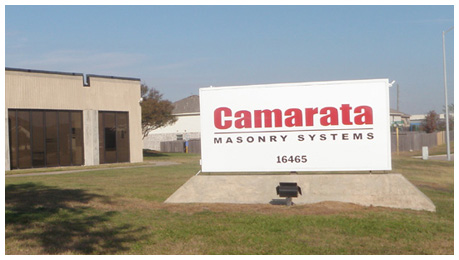 EM: How did you get into the masonry business?
EM: How did you get into the masonry business?
KC: It was by happenstance. In college I worked during summers in construction as a laborer for a general contracting firm because I could make more money doing that than anything else, then basically I just grew to love it. I was working for a general contractor after college when a friend of mine contacted me. He ran an engineering personnel placement service, and he thought that I would be a good fit for a relatively young stone contractor out of New Orleans. I interviewed and was hired.
So your experience before going to work for the contractor in New Orleans was in all different kinds of construction?
It was primarily general contracting and carpentry, specifically, for the general contractor.
Did you have any training outside of the job? Did you go to a trade school?
No, it was all on the job. In college I was pursuing a management degree, and I really thought I was going to become an attorney like my brother. I had absolutely no predisposition to go into construction whatsoever.
So, in a way, Construction found you!
It absolutely found me, and I absolutely loved it. I gravitated toward building things. While I was at the New Orleans company, which is now one of my competitors, the company grew rapidly and had projects from coast to coast. I think I completed projects in 13 states, and my division ultimately had projects from California to Maryland and many places in between. I was noticing the many pictures in your hallway of jobs you have done. Tell me about some of the bigger projects you have completed.
I was noticing the many pictures in your hallway of jobs you have done. Tell me about some of the bigger projects you have completed.
Well, we started Camarata Masonry eight years ago, so in the scheme of things we are a relatively young company; however, I have worked with some of the people here for over 20 years. So our nucleus is not really that young.
We cover a lot of ground. Our projects vary from retail to health care, from schools to restoration. In retail we did part of LaCenterra at Cinco Ranch. In health care we did the stone and masonry at the Baylor College of Medicine Research Tower with Vaughn Construction and the masonry and exterior stone on the Texas Children’s Maternity Center with Bellows Construction. We have worked on K through 12 schools. We did the masonry on Goose Creek High School and the expansion of Kingwood High School and Humble High School. Another important project we did was the El Paso Energy Tower renovation with really high-end finishes – we used a marble that is highly valued in the world and is rarely used in such quantity because it is so expensive.
Give me examples on say, the expansion of Kingwood High School, what specific kinds of work did your company do on that project?
You see, that is what is so difficult when people ask “What projects have you done?” – because it depends on what discipline you are asking about. We cover so many niches in the marketplace.
We have a Tile Division, which is primarily ceramic tile, sometimes stone. And that would be a “thin-set application”. This is where a very thin layer of mortar is spread with a trowel, and the tile is then “stuck”, for lack of a better term. It could be vertical or horizontal.
Then we have a Natural Stone Division, which is more what is referred to as “dimensional stone”, which is a different setting method and process. So that could go from engineered skin systems on high-rises to interior decorative marble in the lobby.
Tell me what is an “engineered skin system”?
That is everything you see on the exterior of a building except the glass. It’s the stone facade.
I see.
Now stone facades have disappeared from the marketplace somewhat – I mean we typically have the first two or three floors and then after that they switch to pre-cast concrete or glass. In another decade, you may have seen all stone and glass all the way up.
Is that because it is too costly to do it all the way up?
I think it is more of an architectural trend, because curtain wall is equally expensive as stone skin.
Another division we have is our Masonry Division. Masonry is defined as units laid up one at a time in mortar. So we have those three disciplines in many different market niches. For instance, on the BBVA Compass Stadium where the Houston Dynamo play, we did the masonry and the ceramic tile,  but there was no dimensional stone on that project. We were a part of the restoration of the Harris County 1910 Courthouse where we had to color-match and fill in the missing pieces of the old ceramic tile mosaics. On that project we also took down the natural stone, brought it here to our shop to clean and restore it, returned it to the site, cut it and put it in place in some new areas. We opened up the quarry that supplied the original stone to procure new stone to match the old stone, and erected it. When you go into that building, you see Old World craftsmanship that was executed by Modern Day mechanics. It is truly a piece of work.
but there was no dimensional stone on that project. We were a part of the restoration of the Harris County 1910 Courthouse where we had to color-match and fill in the missing pieces of the old ceramic tile mosaics. On that project we also took down the natural stone, brought it here to our shop to clean and restore it, returned it to the site, cut it and put it in place in some new areas. We opened up the quarry that supplied the original stone to procure new stone to match the old stone, and erected it. When you go into that building, you see Old World craftsmanship that was executed by Modern Day mechanics. It is truly a piece of work.
Where do you find new trainees, new people to hire?
Typically we try to get our people to recruit them. The best way is for people who are already in the business and like it to go out and find interested parties. In a past life, we were the last major union masonry contractor and the last major union stone contractor in the Southwest. Our background is primarily from a union-based contracting perspective. The unions had the best training mechanism, so we have that in mind and we have that lineage in craftsmanship, and that is what we are trying to preserve. We train intensely on the job through a very lengthy apprenticeship process – rotating people through various types of work to make sure we find what they are really good at. Some people might be really good at tile, some people might be good at dimensional stone, some might be better at masonry. And then we also find people who are capable of multiple trades and we attempt to cross-train them, which makes them more valuable. When you have a specific market downturn, a niche downturn, they can still be viable. We spend a tremendous amount of time training, and that’s why we normally don’t have people leave us. We do offer benefits to all of our employees, which is unusual for our trade.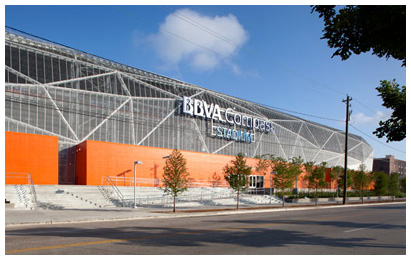 You mentioned that the apprenticeship is a lengthy program, partly because you rotate the trainees through the different divisions, but how long does the process typically take for a new person from first being hired to be finished with the apprenticeship?
You mentioned that the apprenticeship is a lengthy program, partly because you rotate the trainees through the different divisions, but how long does the process typically take for a new person from first being hired to be finished with the apprenticeship?
There is no set time limit, and we try to rotate them through different supervisors. In that way, we get a cross section of opinions and no one plays favorites. Then we assess the individual skill level. We are seeking a more formal training process. We do participate in the C3 initiative, which is exciting. Hopefully we will be able to establish a very formalized training program within our company, within all three disciplines, where there would be a set time for the apprenticeship, similar to what the union apprenticeship was.
I understand it is not a set time limit, but could the apprenticeship be finished in as quick as one year?
No. In order to create a real journeyman, it takes years. You have to have the aptitude, and then it takes years of training. And that’s the difference, as we say, between “us” and “them”. We don’t put anybody in a position where they are not going to do first-class work. We are not going to have them fail for themselves or for the company. We constantly watch them and we bring them along as fast as they are capable of being brought along. We have them do what they are capable of doing, and the process is time consuming.
Fortunately we do so many different kinds of work that they really get a cross section of training. Let’s take the masonry division for example. Typically the guys out there are called “line burners”. When you are laying masonry units, they actually pull a string line, and that’s what keeps them  straight. They lay units to the line. A true craftsman will do that fairly easily, but the trick would be when he is constructing jack arches, or building a lead, which is where variant walls come off of a certain point – things that take a higher level of skill. You might have a company that works on a school where you have big, long walls, and they have a lot of guys who are very capable of doing straight walls and laying to the line, so for that company they would be considered masons. But for our company, if we were to go to Rice University and build another Jones Graduate School, those workers would be totally inappropriate, and they would not be considered masons. They would be apprentices at best. So because we do so many different types of work and we specialize in high-end finishes, when someone reaches a journeyman level status with us, they are truly qualified.
straight. They lay units to the line. A true craftsman will do that fairly easily, but the trick would be when he is constructing jack arches, or building a lead, which is where variant walls come off of a certain point – things that take a higher level of skill. You might have a company that works on a school where you have big, long walls, and they have a lot of guys who are very capable of doing straight walls and laying to the line, so for that company they would be considered masons. But for our company, if we were to go to Rice University and build another Jones Graduate School, those workers would be totally inappropriate, and they would not be considered masons. They would be apprentices at best. So because we do so many different types of work and we specialize in high-end finishes, when someone reaches a journeyman level status with us, they are truly qualified.
Tell me about the hierarchy of jobs within your company.
We have three different disciplines: tile setters, marble setters, and brick masons. Within each of those disciplines, you have increasingly skilled levels of craftsmen: beginning with laborers, then apprentices, then journeymen, and finally foremen.
Could a person be a journeyman in tile setting but only be considered an apprentice in brick laying?
Most people seem to specialize. They like one discipline best and they tend to focus on that, and that’s fine. Even laborers can be very specific. Marble setter helpers can sometimes be very focused just on that. And then some really have the aptitude to do more. We have some tile setters who are  pretty good marble setters and the other way around. We have some masons who are pretty good exterior stone setters, so we do have some crossover. Operators and scaffold builders would cross over between all disciplines.
pretty good marble setters and the other way around. We have some masons who are pretty good exterior stone setters, so we do have some crossover. Operators and scaffold builders would cross over between all disciplines.
Another good thing about us is we actually have levels within the company. We have what we call a “company individual” and a “lead individual”. Let’s take laborers, for instance. A laborer who works for us most of the year but may bounce somewhere else for a job and then come back – he may have worked for us for 20 years but has not been consistent – he would just be considered a laborer. A “company laborer” is someone who has exhibited a closeness to us and has really put himself out there and has gone the extra mile, that is someone we will invest in, and he gets a higher wage. Then there is a “lead laborer”, which is someone who can direct other laborers. We have these distinctions at laborer, apprentice, and every journeyman level, and then we have three levels of foreman. So everyone has a place to go.
That’s a career track.
Yes. If you are going to have a sustainable workforce, you’ve got to have places for people to go. So if you hire raw material, that person is going to come in at the bottom and have lots of options as far as disciplines, depending on what he likes. And we are going to help them learn as fast as they can because it benefits us. As they learn they become more valuable to the company and they receive better benefits and better wages – they certainly have a career path.
Thank you for your time today.
Thank you.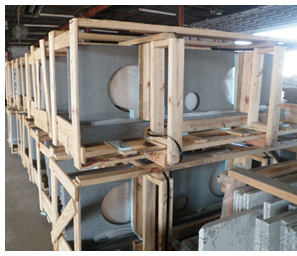
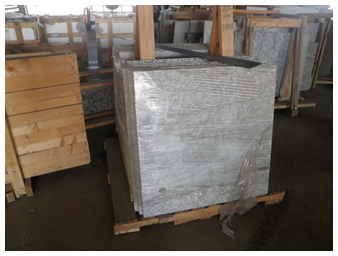
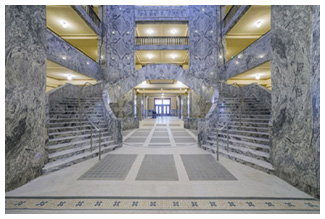
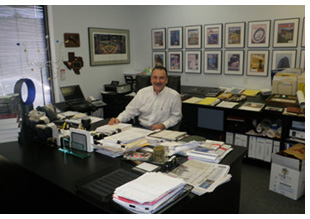
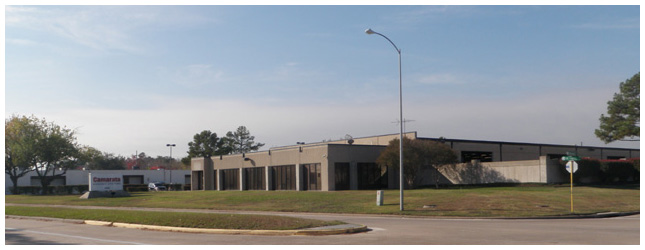
Conversation with a Craftsman – Featured Craft: Masonry
by Elizabeth McPherson | December 06, 2012



Comments
Beautiful picture
Beautiful picture of the courthouse!
Add new comment